Peter Dornauf – 14 May, 2014
Dryburgh plays here with several levels of unreality. Even the pot holding the plant is worked into the machinery of the plot: a dark grey ‘the helvetica of pots’, a brand associated with the text font of the same name (once a slightly elevated choice but now with common usage its status is reduced). Repetition and duplication shift and alter value, playing with hierarchies the same way that context can mess with romance.
Hamilton
Group show
Rise/Fall: Comfortable Rhythms
Curated by Karl Bayly
24 April - 16 May 2014
Trace. A remnant, a sign, a residue, vestige or mark. The current show at Pilot, Rise and Fall: Comfortable Rhythms, revels in the world of the trace. Six artists, two from Auckland and four from Hamilton, have been brought together by Karl Bayly to explore common themes with common methods.
Claire Goldsworthy in Tahiti #1 #2 #3 brings us a selection of her photographic prints from her trip to Tahiti, holiday snaps of tropical paradise. These images of ‘Eden’, minus any inhabitants, evoke romantic notions of nature, beauty and freedom, an escape holiday into a dream world a la Rousseau. However a small object in the central print, (an outside lamp fixed to the trunk of a palm tree) is a reminder that ‘paradise’ is not always what it seems. This trace of ‘occupation’ interrupts with its revelation that we are involved in a construction. The images, (severely cropped), eliminate almost all hint of people except for the suggestion of a knee and a hat. The trace of the traveller is thus present while the photos themselves are a record, a trace of an event that in itself was not a “full presence”.
More travel snaps are used by Karin Hofko in a work with alternate titles; You were meant to be a photograph OR The story of technology taking responsibility (2012). She employs the use of video images collated in a rough collaged arrangement that runs for nearly four minutes. This bricolage of video out-takes from a five year stint in Germany, Vietnam and New Zealand, randomly spliced together, represents the dead data of a personal journey (120 waste media clips). These thus become traces ‘deleted’ from the main story, to form an alternative meaning/narrative, representing an ‘other’ which would have been forever ‘absent’ if not ‘saved’.
The outtakes provide a parallel narrative and remind us that the major story itself is a construct. As life too involves that which is edited out and left on the cutting-room floor, questions are raised about process and product and the role of technology in how we perceive ‘reality’.
Hofko has a second work in the show called Self-titled, 2011, where we see her on screen becoming a creator of social reality. She is playacting, acting out the role/s we all subsequently act in relation to the phenomena of romance. The artist has videoed herself speaking directly to the camera/viewer, parroting lines with ‘genuine’ feeling, phrases like “you are divine” and “I am mad about you” and “You are so attractive” and “I love you, absolutely”. She has several attempts at this, each take interrupted by a text which appears at the bottom of the screen - which may be the voice of a prompt or instructor critiquing the ‘performance’ with statements like “It’s a bit pathetic” and “just be natural”.
The irony, of course, is that the whole thing is completely unnatural and yet it sounds ‘plausible’ even in its contrivance while striving for naturalness. The text may alternatively be the performer’s own subconscious giving directions, driving deeper the implication of the construction. As she re/traces, the sincerity of her words, voice and expression reaches a pitch which exposes the sham even as she tries harder to convince herself and us of its reality.
Collectively it reminds us that we are the playthings of language and of our own symbolic making, trapped inside the cage: “I love you”, text supplied. Hofko helps spring/release the trap.
In a similar vein, Karl Bayly has printed a small booklet, a one-off slim volume with text and photographs, the text of which has been downloaded from the IMDB website where anyone can write plot summaries of B grade movies. Bayly has chosen some cheesy and earnest romance stories like ‘Ten things I Hate About You.’ He has passed these summaries through an electronic translator into a foreign language, then retranslated them back again into English. This results in the final version reading a little different from the original.
Such a deconstructive process demonstrates the fallibility of language where traces of the other language leave their mark. The photographs that accompany the text focus on images that literally depict the trace of a person’s presence - a handprint on the back of a car, a wet footprint on a floor, lipstick on a cup.
A similar preoccupation is explored by Wendy Richdale via a small HD video loop on a six minute revolve. The screen size of this portable DVD player is sufficiently tiny to create an intimate experience where a window scene is shot from inside a bathroom for six minutes while somebody is taking a shower. The viewer witnesses two subtle changes - the window gradually steaming up, then clearing, and the appearance of a slight pink glow in the window as the sun comes up.
Here is the trace of something taking place. We never see the person; we hear the sound of water and see subtle changes in light and mist. The transitions are slow with a painterly quality akin to Monet and his haystacks - only here the shifts are more subtle and done in real time.
The final work in the show uses machinery as its medium. Emil Dryburgh’s installation mimics a corner in an office, complete with water-cooler, photocopier, rubbish bin and small potted plant. The central ingredients are the black and white inkjet prints that the photocopier spits out; white images of a young woman, Ophelia (the title) who happens to be the girlfriend of the artist. These A4 copies of her face lie strewn on the floor in degrees of faded dilution, so that the image in more ways than one becomes the trace. The duplication of the image renders, as Warhol once noted, the evisceration of meaning. Here in a context that suggests office romance, Ophelia becomes generically our girlfriend where she is made the cipher of love. We take home her picture, a trace, which we ‘made’.
Dryburgh plays here with several levels of unreality. Even the pot holding the plant is worked into the machinery of the plot: a dark grey ‘the helvetica of pots’, a brand associated with the text font of the same name (once a slightly elevated choice but now with common usage its status is reduced). Repetition and duplication shift and alter value, playing with hierarchies the same way that context can mess with romance.
The one work in the show which departs from the machine based pieces is a conventional oil on canvas painting by Priscilla McIntosh. However the work does depict a machine, a laptop, propped up on a double bed. We do not see the images on its screen but the young woman who does is presented as a sophisticated business woman, suited, hair tied back, perhaps domiciled in a hotel, and possessed of an elegant poise.
She is self-assured, but it is the slightly enigmatic smile on her face that becomes the hook in the painting. It seems to engage and detach, warm and chill, a touch of cynicism lurking in the corners of the mouth, ambiguous like a modern Mona Lisa. It has Hopperesque elements which draw the viewer in but keeps them equally at bay. Is she checking out a message from her boyfriend? Is it something else? In a bedroom setting, intimacy is hinted at, but she (like us) is in a simulated world where technology mediates reality, where relationships are conducted through media that filter and create their own hermetic universes, where we operate in a realm that deals only with the trace.
Peter Dornauf
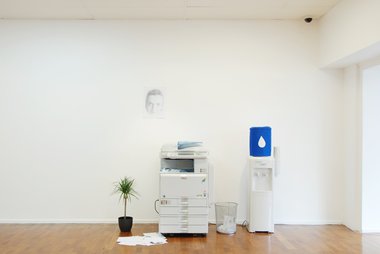
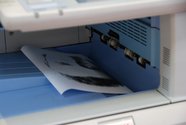
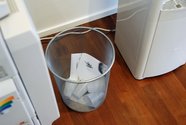

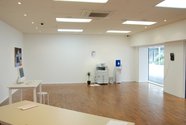
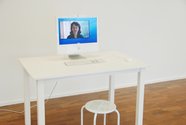

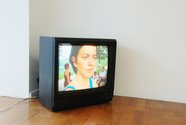
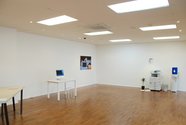
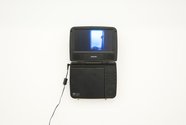
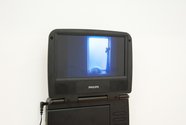
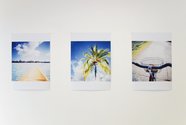


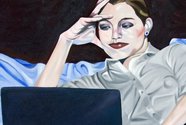
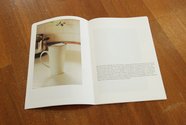
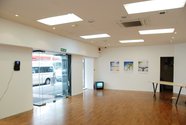
 Advertising in this column
Advertising in this column Two Rooms presents a program of residencies and projects
Two Rooms presents a program of residencies and projects



This Discussion has 0 comments.
Comment
Participate
Register to Participate.
Sign in
Sign in to an existing account.